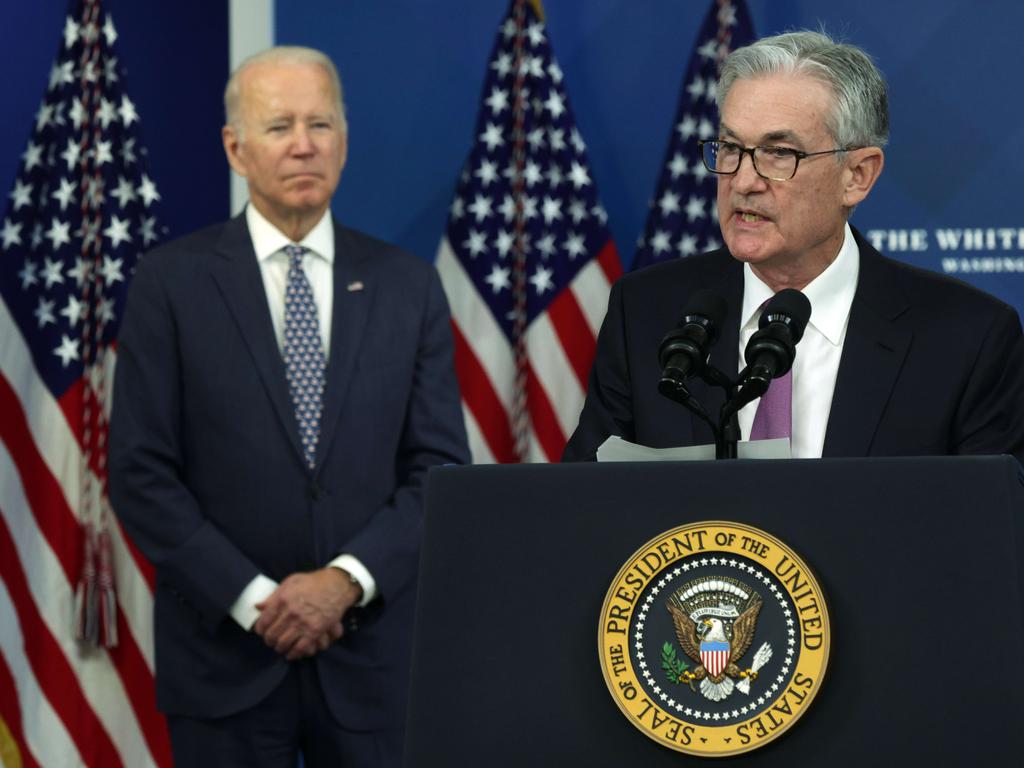Next US inflation figures could spell danger for Joe Biden and Federal Reserve


If it were only turkeys going up in price she might have a point, but prices in the US rose 6.2 per cent over the year to October, the highest in 31 years, and comfortably ahead of wages, which increased 4.9 per cent.
Around the world political leaders, bond traders, investors and ordinary wage earners who aren’t fooled by what economists call “money illusion” (ignoring inflation when calculating wage gains) should be keenly interested in the next batch of US inflation figures, to be revealed early on Saturday morning Sydney time.
Another rise with a six in front of it would damage Biden’s standing further, but more importantly would put another nail in the coffin for hope this year’s inflationary bounce was “transitory”, as the US central bank had hoped in April.
As usual no one really knows, or even agrees on the actual rate of inflation. Thanks to the new Omicron variant, inflation might ease a little.
Fear governments might impose a new round of travel restrictions has sent oil prices sharply lower, shaving 3 per cent off the US pump petrol price to $US3.34 a gallon (or 74c a litre). That won’t do much to erase the 60 per cent gain over the past year, but oil is a big part of the CPI.
The Federal Reserve Bank of Cleveland takes a stab at assessing inflation daily, so-called “now casting”. It’s latest reading puts inflation at 6.6 per cent in November, and 6.7 per cent in December (based on prices so far this month).
Americans think prices will increase by 4.9 per cent over the next 12 months, according to the University of Michigan’s closely watched survey, the highest read since July 2008, when the oil price rapidly surge to $US140 a barrel, around double its current level.
Inflation expectations matter because they can become self-fulfilling, especially among businesses, which have greater price setting power. They, at least, according to a survey by the Federal Reserve Bank of Atlanta, are only expecting inflation of 3.3 per cent.
Optimists say inflation fears are misplaced anyway, pointing out that oil has done all the heavy lifting.
So-called “Core CPI”, which strips out energy and food from the CPI, suggests the CPI rose 4.6 per cent over the 12 months to October. Shuffling the deck a different way, by removing any extreme movements up or down, the “trimmed mean” CPI suggests that prices rose 4.1 per cent. And an obscure indicator known as the “PCE Trimmed Mean deflator”, which is a much broader indicator of price changes, which similarly strips out volatile items and is complied by the Dallas Federal Reserve Bank, suggests prices only rose 2.6 per cent.
Finally, for all the talk of an inflation breakout, prices in financial markets, where investors and traders have big money on the line, suggest inflation expectations are “anchored”, expected to average around 2.5 per cent a year over the next five years.
Maybe Psaki was right after all?
Pinning down the rate of inflation is tricky. Prices move much more than they used to because digital technology has given businesses so much more information about demand for their products, and scope to update their prices, a trend supercharged by the shift to online shopping in the pandemic.
And there are far more prices, too, given the explosion in the range of goods and services compared even to a few years ago.
Steven Hanke, a professor of monetary economics at Johns Hopkins University, reckons it doesn’t matter what households and businesses think, or what the CPI says. Inflation is coming, and a lot of it, simply because the Fed has pumped so much money into the economy.
It’s just a matter of time.
“There is a widespread view among officials at the Federal Reserve System, economists in the Biden administration, among academics, and even among large parts of the business community that the current bout of US inflation is the result of supply chain disruptions,” Hanke tells The Australian.
“These notions are fundamentally in error, representing misstatements of the problem and its true causes,” he adds, arguing it’s the amount of money sloshing around that ultimately matters.
The trillions of dollars manufactured by the Federal Reserve to prop up the US economy during the pandemic, under both presidents Biden and Trump, will increase US prices by between 27 per cent and 20 per cent over the next few years (and by 11 per cent in the UK and 7 per cent in Australia), he estimates in research released last week.
Psaki, Biden and most of everyone else will be hoping he is wrong.






“I don’t know if you’ve ever cooked a turkey before, but a twenty-pound turkey is a pretty big turkey; they’re about $1 more,” President Joe Biden’s press secretary Jen Psaki said on Thanksgiving last month, playing down the 5 per cent increase in poultry prices over the last year.